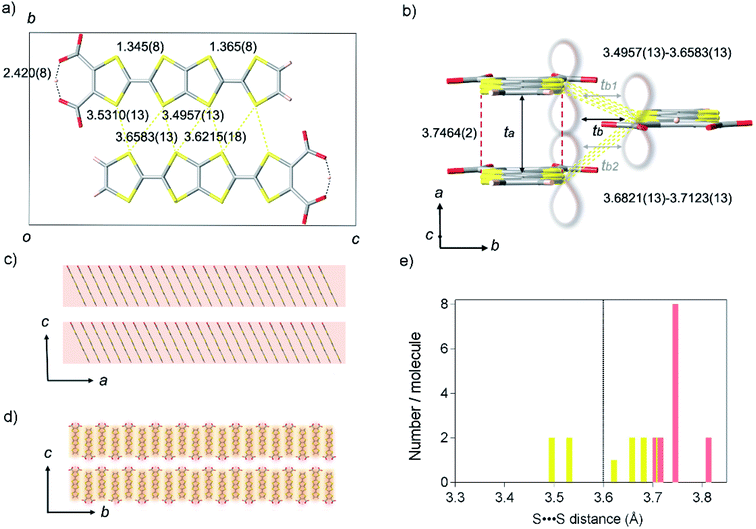 Open Access Article
Open Access ArticleCreative Commons Attribution 3.0 Unported Licence
Correction: Crystal structure and metallization mechanism of the π-radical metal TED
Yuka
Kobayashi
*a,
Kazuto
Hirata
a,
Samantha N.
Hood
b,
Hui
Yang
b,
Aron
Walsh
*b,
Yoshitaka
Matsushita
a and
Kunie
Ishioka
a
aNational Institute for Materials Science (NIMS), Sengen 1-2-1, Tsukuba, Ibaraki, Japan. E-mail: kobayashi.yuka@nims.go.jp
bDepartment of Materials, Imperial College London, Exhibition Road, London SW7 2AZ, UK. E-mail: a.walsh@imperial.ac.uk
First published on 22nd October 2020
Abstract
Correction for ‘Crystal structure and metallization mechanism of the π-radical metal TED’ by Yuka Kobayashi et al., Chem. Sci., 2020, DOI: 10.1039/d0sc03521a.
The authors regret an error in Fig. 2e where the dotted line, acting as a guide to readers, was in the incorrect position. The corrected version is included here.
The correction of Fig. 2e does not influence further discussion, or the conclusions of the article.
The Royal Society of Chemistry apologises for these errors and any consequent inconvenience to authors and readers.
| This journal is © The Royal Society of Chemistry 2020 |

